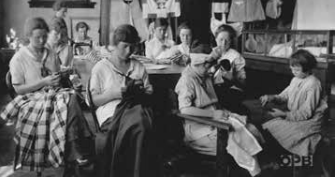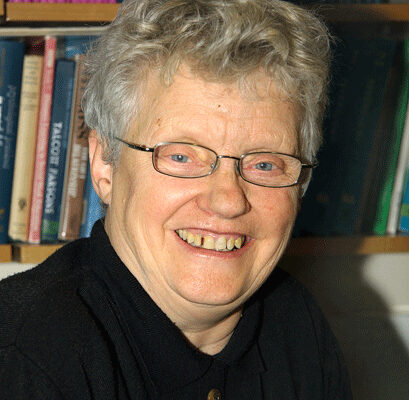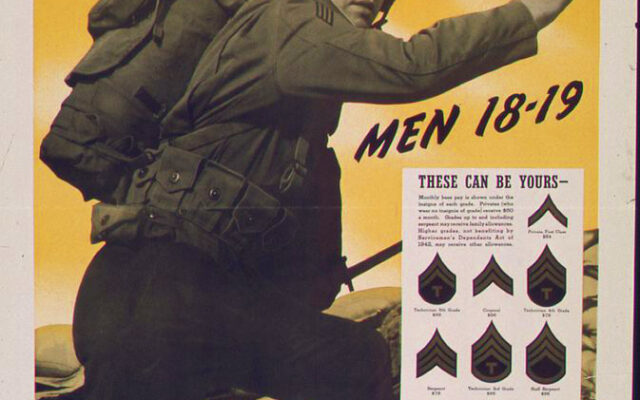The Fairview Training Center, which opened in 1908, aimed to take the learning-disabled citizens of Oregon out of the asylums where they were then housed and into a specialist institution.
By the time it finally closed in 2000, roughly 10,000 people had passed through its doors. They stayed for anything from a few years to their whole lives. Residents were segregated by age, sex and ability, and placed in cottages on more than 700 acres of farmland. The men and boys were put to work on the land and the women and girls did the laundry and mended clothes.
As it was a state institution, the government paid for residents’ care, with families contributing what they could. Some residents were placed there by families who could not afford to care for them but, in the 1930s, press reports suggested forced commitment occurred, where children of poor immigrant families were targeted by social workers who equated poverty with likely “feeble-mindedness”.
This desire to purge society of supposed “undesirables” was symptomatic of the burgeoning eugenics movement. In 1923, Oregon – like many US states around this time – passed a eugenics bill that allowed for the compulsory sterilisation of various categories of people, which included the “feeble-minded”.
As a result, residents of state hospitals and prisons were reviewed by staff who would then recommend candidates for sterilisation to the State Eugenics Board.
Sterilisation needed before release
For decades, inmates had to be sterilised before they were released, a practice that continued into the 1970s. The law itself was only repealed in 1983 and, in 2002, governor John Kitzhaber issued a formal apology for these human rights violations. By that time, more than 2,600 forced sterilisations had taken place at Fairview.

Kitzhaber also acknowledged that, until the mid-1980s, staff “commonly used inhumane devices to restrain or control patients, including leather cuffs and helmets and straitjackets and inappropriately high dosages of sedatives or psychotropic medications” (Gelser, 2010). This was corroborated by survivors, who recalled punishments such as being hit with shoes, scalded with hot water and being caged and medicated into submission.
From its early days, Fairview was dogged by accusations of abuse and neglect. Stories in the local press claimed that the institution was overcrowded and understaffed, sometimes having only one worker to care for 85 residents. Insanitary conditions led to outbreaks of dysentery and meningitis. A flurry of news stories in the 1970s reported accidents, injuries and rapes of residents by both fellow residents and their supposed caregivers.
One academic investigation found that, between 1963 and 1987, inmates at Fairview were more than twice as likely to die from unnatural causes as people in the surrounding Marion County who were not institutionalised. Change came thanks to advocacy groups and lawsuits. The 1970s saw Fairview resident Linda Gheer co-found self-advocacy group People First. They campaigned to help people leave institutions such as Fairview.
Oregon was the first state to have a People First group and, by 1984, it was an international movement. Arguing that they were people first and labels second, those in the group did much to change public opinion.
Mothers from Hell
Around the same time, a group known as Mothers from Hell, formed of parents of children with learning disabilities, lobbied the state for better resources and support. As a result, lawmakers asked the federal government for greater flexibility over how they spent Medicaid. Oregon was the first state to apply for a waiver permitting them to redeploy the funds they received from institutional care to supporting learning-disabled people to live in the community instead, allowing them more choice over how and where they lived.
how and where they lived. In the 1980s, a lobby group that had been fighting for the rights of learning-disabled adults and children since its establishment in the 1950s, now known as the Arc of Oregon, filed a number of lawsuits regarding Fairview, including one against the Department of Justice. When representatives from the Department of Justice went to Fairview to investigate, they were shocked to find “conditions that were very abusive”, and certified it, withdrawing millions of dollars in funding. The courts ordered Fairview to implement a rigorous plan to improve conditions, which included hiring hundreds of staff and getting rid of restraints.
However, despite significant improvements, problems persisted and Fairview finally closed in 2000. Today, many of its former residents are self-advocates, intent on sharing their experiences to ensure the story of Fairview is not repeated, and Oregon is one of the few states with no long-stay institutions for learning-disabled residents.
Thanks to Philip Ferguson who was involved in the video
Videos
In the Shadow of Fairview. 2020. https://tinyurl.com/yzlg6lmc
Breaking Barriers to Inclusion. 2018. A visit to Fairview before it was torn down. https://www.youtube.com/watch?v=5xwaQY–m74.
Voices from Fairview. 2004. Accounts from Fairview residents. https://www.youtube.com/watch?v=GP85pIcBQQ8
In Our Care. 1959. Public education film about Fairview. https://vimeo.com/365508.
Bibliography
Gelser S (2010) Erasing Fairview’s horrors. 10 January. https://tinyurl.com/yc323f2f
Oregon Self Advocacy Coalition. Our history. http://www.askosac.org/history/.
Ferguson PM, Ferguson DL, Brodsky MM (2008) “Away from the Public Gaze”. A History
of the Fairview Training Center and the Institutionalization of People with Developmental Disabilities in Oregon. Western Oregon University. https://tinyurl.com/yacxygdx




